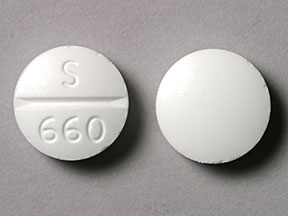Pyrazinamide
Generic name: pyrazinamide [ peer-a-ZIN-a-mide ]
Dosage form: oral tablet (500 mg)
Drug class: Miscellaneous antituberculosis agents
What is pyrazinamide?
Pyrazinamide is an antibiotic that fights bacteria.
Pyrazinamide is used to treat tuberculosis (TB) in adults and children.
Pyrazinamide must be used with other TB medicines. Tuberculosis can become resistant to treatment if pyrazinamide is used alone. Take all your medicines as prescribed by your doctor.
Pyrazinamide may also be used for purposes not listed in this medication guide.
Pyrazinamide side effects
Get emergency medical help if you have signs of an allergic reaction: hives; difficult breathing; swelling of your face, lips, tongue, or throat.
Pyrazinamide may cause serious side effects. Call your doctor at once if you have:
-
joint pain or swelling;
-
easy bruising or bleeding (nosebleeds, bleeding gums);
-
gout flare-up symptoms--joint pain, stiffness, redness, or swelling (especially at night); or
-
liver problems--nausea, upper stomach pain, itching, tiredness, loss of appetite, dark urine, clay-colored stools, jaundice (yellowing of the skin or eyes).
Common side effects of pyrazinamide may include:
-
joint or muscle pain;
-
nausea, vomiting; or
-
loss of appetite.
This is not a complete list of side effects and others may occur. Call your doctor for medical advice about side effects. You may report side effects to FDA at 1-800-FDA-1088.
Related/similar drugs
Warnings
You should not use pyrazinamide if you have active gout or severe liver disease.
Before taking this medicine
You should not use pyrazinamide if you are allergic to it, or if you have:
-
active gout; or
-
severe liver disease.
To make sure pyrazinamide is safe for you, tell your doctor if you have:
-
HIV or AIDS;
-
gout;
-
liver disease;
-
diabetes; or
-
if you drink large amounts of alcohol.
Your doctor will check your liver enzymes and uric acid levels before you start treatment, to make sure you can safely take pyrazinamide.
It is not known whether pyrazinamide will harm an unborn baby. Tell your doctor if you are pregnant or plan to become pregnant while using pyrazinamide.
Pyrazinamide can pass into breast milk and may harm a nursing baby. Tell your doctor if you are breast-feeding a baby.
How should I take pyrazinamide?
Follow all directions on your prescription label. Your doctor may occasionally change your dose to make sure you get the best results. Do not use this medicine in larger or smaller amounts or for longer than recommended.
Tuberculosis must be treated over a long period of time (up to 6 months or longer).
Pyrazinamide is given in combination with other medications and should not be used alone. You may need to take pyrazinamide for only the first 2 months of your full course of treatment.
Pyrazinamide is usually taken once per day. However, some people take the medicine only 2 times per week.
Follow your doctor's dosing instructions very carefully.
Use this medicine for the full prescribed length of time. Your symptoms may improve before the infection is completely cleared. Skipping doses may also increase your risk of further infection that is resistant to antibiotics. Pyrazinamide will not treat a viral infection such as the flu or a common cold.
Tell your doctor if you have any changes in weight. Pyrazinamide doses are based on weight (especially in children), and any changes may affect the dose.
This medicine can cause unusual results with certain medical tests. Tell any doctor who treats you that you are using pyrazinamide.
Store at room temperature away from moisture and heat.
Keep the bottle tightly closed when not in use.
What happens if I miss a dose?
Take the missed dose as soon as you remember. Skip the missed dose if it is almost time for your next scheduled dose. Do not take extra medicine to make up the missed dose.
What happens if I overdose?
Seek emergency medical attention or call the Poison Help line at 1-800-222-1222.
What should I avoid while taking pyrazinamide?
Follow your doctor's instructions about any restrictions on food, beverages, or activity.
What other drugs will affect pyrazinamide?
Other drugs may interact with pyrazinamide, including prescription and over-the-counter medicines, vitamins, and herbal products. Tell each of your health care providers about all medicines you use now and any medicine you start or stop using.
More about pyrazinamide
- Check interactions
- Compare alternatives
- Pricing & coupons
- Drug images
- Side effects
- Dosage information
- During pregnancy
- Drug class: miscellaneous antituberculosis agents
- Breastfeeding
- En español
Patient resources
Professional resources
Related treatment guides
Further information
Remember, keep this and all other medicines out of the reach of children, never share your medicines with others, and use this medication only for the indication prescribed.
Always consult your healthcare provider to ensure the information displayed on this page applies to your personal circumstances.
Copyright 1996-2025 Cerner Multum, Inc. Version: 4.01.

